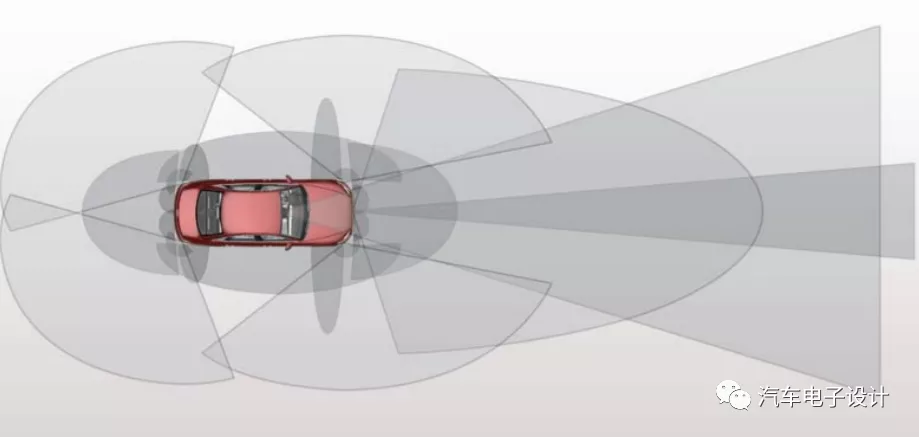Introduction
Today is the weekend, and I’m ready to focus on the EE architecture of the Audi A8, the system breakdown of ADAS, and the further disassembly of the ZFAS controller to complete this weekend’s task. Of course, there are many aspects of the Audi A8 that are worth reviewing, especially when considering the details of the PPE developed by Audi and Porsche from the Audi A8, which will need to be continuously monitored and analyzed in the “Automotive Electronics Cloud Disassembly” section of this weekend’s program.
Audi A8’s EE Architecture
As shown in the figure below, the roughly estimated 70 ECU that Volkswagen calls can be roughly estimated from the Audi A8. Due to the complexity peak of the distributed system, the system stack is a bit overwhelming, as shown below:
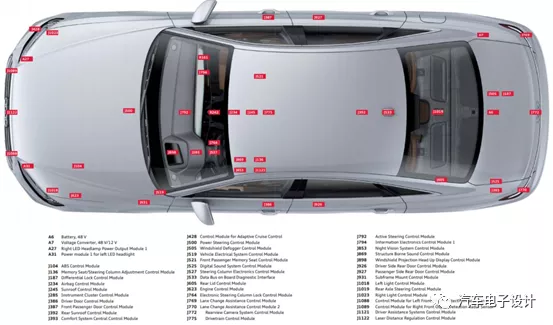
According to the overview diagram that we can understand, it can be seen that it is composed of the following contents:

On the Audi A8, we can see that a hybrid system based on several core modules, including the auxiliary driving controller around J1121, information control unit 1 around J794, electrical control module J519, and the central control unit J393, is constructed. A large number of LIN nodes are deployed here to control, and a battery system + DCDC controller is opened for 48V. Due to the large number of configurations, the ECU is divided into two comfort CAN systems to stack together.
The control around J1121 is done using Flexray (at that time, several European car companies such as Volvo and BMW followed suit); information entertainment is set up around the information CAN, MIB CAN, instrumentation CAN, MOST Bus, etc. We will disassemble individual MIB and instrument of Audi later to link the hardware and components of the parts.
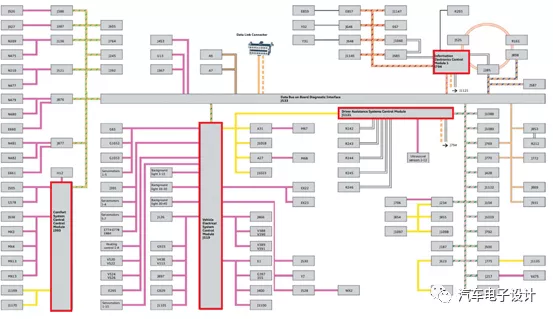
Design of Audi A8’s ADAS System
As shown in the figure below, strictly speaking, this is a pseudo centralized architecture. The function of the ZFAS auxiliary driving control unit J1121 is very powerful, but Audi has made the entire function structure very scattered.
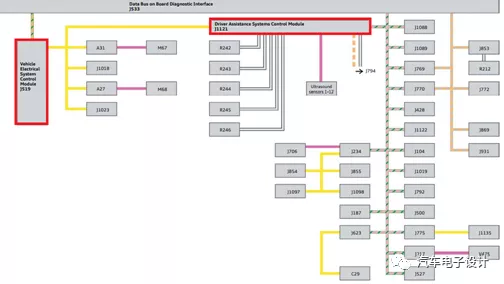 Audi actually began to combine many of the functions here, mainly combining the AALA Audi Active Lane Assist, Adaptive Cruise Control ACC, and TJA Traffic Jam Assist that originally controlled three horizontal and vertical directions into two components: Active Lane Depature Warning and Adaptive Cruise Assist.
Audi actually began to combine many of the functions here, mainly combining the AALA Audi Active Lane Assist, Adaptive Cruise Control ACC, and TJA Traffic Jam Assist that originally controlled three horizontal and vertical directions into two components: Active Lane Depature Warning and Adaptive Cruise Assist.
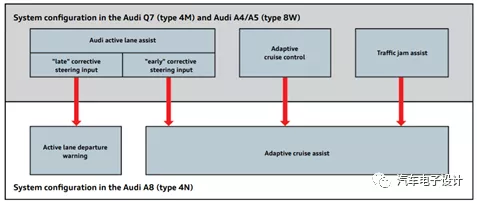
In the ZFAS that we will detail and analyze later, part of the J1121 control unit directly reads data, while the other part processes the data through perception sensors before sending it and returning the results through the FlexRay bus. G203~G206 are rear parking assist sensors, G252~G255 are front parking assist sensors, G568~G569 are front automatic parking assist sensors, G716~G717 are rear automatic parking assist sensors, R242 is the driver assistance system front-facing camera, and there are four external cameras R243~R246 for surrounding environment.
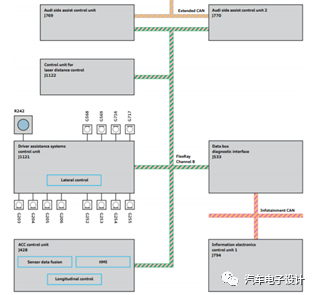
In the following configuration, J1121 is responsible for the first two components, and Audi also cooperates J1121 with other systems to complete other components, such as Predictive Efficiency Assist. This function adjusts the vehicle based on road data provided by the navigation system, including terrain, road conditions (curves, intersections, etc.), and speed limits, in order to achieve efficient driving and reduce the driver’s burden. Note that data fusion and processing are performed in the ACC Controller. Though J1121 is a core controller, its permissions are separate from the ACC Control unit J428, which are split in two parts.
The processor of the laser radar is processed independently by a separate J1122, which means that the ZFAS of J1121 we will see later is a pseudo-core, only used to process ultrasonic sensors+images.
Note: each car has an ACC unit, while only some cars have J1121. For the overall benefit of the vehicle series, a centralized design scheme has been deprived.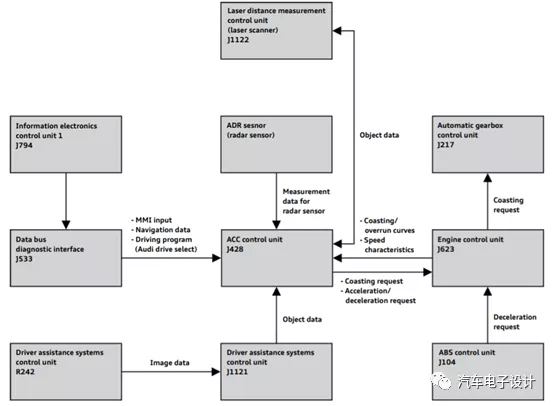
Here are three different configurations for the Audi A8:

Summary
Personally, I believe that this configuration approach has undergone changes as it has moved towards a centralized structure. This has made the architecture of MEB and PPE, especially the integration and processing of functions, more complete. When we later disassemble controllers such as ZFAS and ICAS 2, we will be able to experience this more clearly. That’s all I have for now, but I believe that in the era of intelligent automobiles, electronic engineers will have an even greater arena to showcase their abilities.
This article is a translation by ChatGPT of a Chinese report from 42HOW. If you have any questions about it, please email bd@42how.com.
